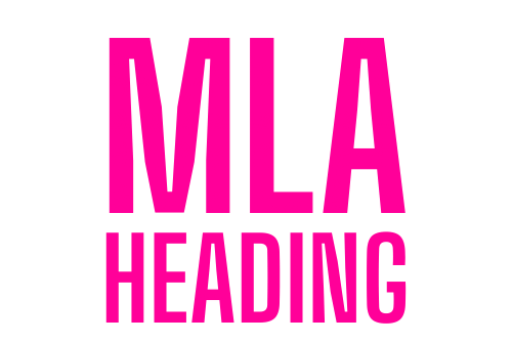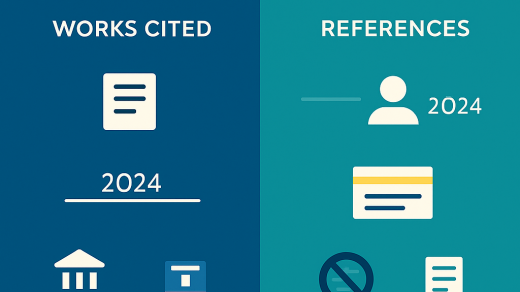Understanding Academic Integrity in the Digital Age
In the twenty-first century, information has become as accessible as it is vulnerable. With the internet offering limitless access to scholarly databases, blogs, and AI-generated content, the temptation and opportunity to plagiarize have increased exponentially. Academic institutions now face the challenge of redefining integrity—not merely as the avoidance of dishonesty but as the active practice of transparency and ethical scholarship.
The Modern Language Association (MLA) style, long regarded as the cornerstone of academic documentation in the humanities, provides a framework that directly addresses this challenge. By insisting on consistent attribution, clarity of source tracing, and an adaptable format for digital and print sources alike, MLA functions not only as a citation style but also as a pedagogical instrument for teaching ethical research practices.
However, combating plagiarism involves more than correct formatting. It requires understanding its many forms—from intentional copying to inadvertent citation errors—and developing tools and teaching strategies that foster intellectual honesty. This essay explores how MLA can be used as both a preventive and corrective measure against plagiarism, examines the advantages and limitations of detection technologies, and offers recommendations for integrating MLA-based instruction into modern classrooms.
MLA as a Framework for Ethical Scholarship
Defining Plagiarism
Plagiarism, in its broadest sense, is the appropriation of another’s intellectual property without proper acknowledgment. It manifests in multiple forms: verbatim copying, paraphrasing without attribution, reusing one’s own previous work (“self-plagiarism”), or misrepresenting AI-generated content as original thought. The MLA Handbook (9th edition) defines plagiarism not simply as theft but as a failure to “give credit where credit is due.”
Unlike earlier eras, today’s digital environment blurs traditional boundaries between authorship, collaboration, and remix culture. Students who grew up in participatory online spaces—blogs, wikis, social media—often perceive information as communal. MLA’s structured citation format helps restore a sense of intellectual accountability, reintroducing the notion that every idea has an origin and that tracing these origins is an ethical act.
MLA’s Preventive Role
The MLA system serves as both a deterrent and an educational guide. By demanding precise documentation of sources, MLA inherently trains students to slow down and reflect on where their information comes from. This mindfulness reduces the likelihood of unconscious plagiarism.
For instance, MLA’s requirement to cite both in-text and in a Works Cited list creates a two-layer system of verification. Even if a student forgets a reference in one section, it can be detected in the other. MLA also accommodates the citation of nontraditional sources—tweets, online videos, and AI tools—thereby preventing unintentional plagiarism arising from ignorance about how to reference such materials.
Furthermore, MLA’s emphasis on signal phrases (“According to Smith,” “As Johnson argues”) encourages writers to distinguish their voice from the sources they consult. This rhetorical awareness not only ensures proper citation but also cultivates analytical thinking—the foundation of academic originality.
Techniques and Tools for Preventing Plagiarism
Teaching Citation as a Thought Process
One of the most effective strategies against plagiarism is shifting the focus from punishment to pedagogy. Citation, when taught as an act of intellectual dialogue rather than as a mechanical task, fosters deeper comprehension and respect for sources.
Instructors can achieve this through scaffolded activities:
-
Source mapping—students create visual diagrams connecting each claim to its supporting source.
-
Annotation exercises—students summarize, paraphrase, and reflect on selected quotes, then apply MLA formatting.
-
Peer review—students identify missing or unclear citations in each other’s drafts, developing editorial literacy.
Such practices demystify citation and promote ethical authorship as a learned skill rather than an assumed instinct.
The Role of Plagiarism Detection Software
| Tool / Method | Function | Advantages | Limitations |
|---|---|---|---|
| Turnitin | Compares student papers to massive databases of published works and submissions. | Highly accurate similarity reports; integrates with LMS platforms. | May misinterpret legitimate quotations; privacy concerns over data storage. |
| Grammarly Plagiarism Checker | Uses AI to detect sentence-level rewording and paraphrasing. | Quick, user-friendly; helpful for ESL learners. | Less reliable for academic databases; sometimes flags common phrases. |
| Copyleaks / PlagScan | Cloud-based tools analyzing structure and semantics. | Detects paraphrased and AI-generated content. | Subscription cost; limited free access. |
| MLA-Integrated Style Checks | Manual review based on MLA guidelines and Works Cited coherence. | Promotes student learning; reinforces understanding of source ethics. | Labor-intensive; relies on instructor expertise. |
While these tools can identify overlaps and suspicious phrasing, they cannot determine intent. A similarity score alone does not reveal whether plagiarism was deliberate or accidental. Therefore, instructors must interpret such results within the broader context of MLA instruction and student development.
Integrating MLA with Digital Literacy
MLA’s adaptability to new media makes it a natural partner for teaching digital literacy—the ability to critically evaluate and ethically use online sources. By guiding students through the process of citing tweets, blog posts, podcasts, and AI-generated text, teachers demonstrate that MLA is not confined to books and journals but extends to every form of intellectual exchange.
For example, MLA’s guidelines for citing generative AI require acknowledging the tool (e.g., ChatGPT) as a source, including the date of interaction and prompt description. This not only maintains transparency but also teaches students that ideas mediated through technology still demand ethical attribution.
Balancing Technology and Human Judgment
The Promise and Perils of Automation
Automation has transformed plagiarism prevention. Software can now detect reworded phrases, translated text, and even AI-generated essays. Yet, overreliance on these tools risks reducing complex ethical issues to mechanical compliance.
Plagiarism detection software identifies textual similarity, not intellectual dishonesty. A paper might score 40% “similar” simply because it includes standard MLA citations, common academic terminology, or block quotes. Conversely, sophisticated plagiarism—paraphrasing without understanding—may go undetected.
Thus, the MLA framework complements technology by focusing on intention, transparency, and intellectual dialogue rather than algorithmic conformity. Proper MLA instruction helps students understand why citation matters, not just how to avoid being flagged.
Teaching Contextual Awareness
A critical component of academic integrity is context—knowing when to cite, how to paraphrase, and when an idea is considered common knowledge. MLA does not provide rigid rules for every scenario; instead, it offers adaptable principles.
Instructors can teach students to ask:
-
Is this idea distinctly someone else’s?
-
Does the phrasing mirror the source’s language too closely?
-
Have I transformed the information sufficiently to call it my own synthesis?
Encouraging this reflective questioning moves beyond mechanical citation and instills the ethical reasoning essential to scholarly writing.
Human Oversight in the Age of AI
The rise of generative AI challenges the boundaries of authorship. Should AI-assisted text be cited? How can one distinguish between legitimate assistance and deceptive outsourcing? MLA’s 2023 online update advises citing generative AI as both a tool and a source, depending on its role in content creation.
For example:
“Text generated by ChatGPT, 15 Aug. 2025, OpenAI, response to prompt: ‘Explain MLA citation ethics.’”
This approach reaffirms that ethical scholarship demands disclosure. While AI can aid in idea generation or grammar correction, ultimate responsibility lies with the human author. MLA thus becomes a guide for transparency in human-AI collaboration, reinforcing accountability amid technological complexity.
Institutional Strategies and the Future of Ethical Scholarship
Embedding MLA Across the Curriculum
Academic honesty cannot be taught in isolation; it must permeate all stages of education. Institutions should embed MLA instruction throughout the curriculum—from first-year composition to graduate research seminars. This continuity reinforces the notion that citation is not a bureaucratic requirement but an intellectual discipline.
Best practices include:
-
Workshops on Responsible Research: Introducing MLA as part of a broader ethics framework.
-
Citation Clinics: Offering individualized feedback sessions for students struggling with paraphrasing or source integration.
-
Cross-Departmental Consistency: Adopting MLA (or complementary styles) across disciplines to avoid confusion and promote transferability of skills.
The Ethics of Detection and Data Privacy
Plagiarism prevention raises ethical questions of its own. When students upload papers to third-party platforms like Turnitin, those works are often stored indefinitely, forming proprietary databases. Critics argue this practice commodifies student writing and raises privacy concerns.
Institutions must balance enforcement with ethics, ensuring that plagiarism detection aligns with data protection laws and respects student rights. Transparent consent policies and anonymized submissions can mitigate these issues. Moreover, MLA’s emphasis on education over punishment offers a more humane framework for addressing violations.
Beyond Policing: Fostering a Culture of Integrity
Plagiarism prevention succeeds not through fear of detection but through cultivation of intellectual honesty. When students view citation as a form of participation in a scholarly conversation, they become invested in its integrity.
Instructors can model this by acknowledging sources in lectures, handouts, and presentations, demonstrating that citation is integral even outside formal writing. Collaborative projects, where students build annotated bibliographies or digital archives, further reinforce shared responsibility for accuracy and acknowledgment.
MLA in the Era of Open Access and Remix Culture
The proliferation of open-access resources and remix culture (memes, mashups, fan fiction) challenges traditional notions of originality. MLA’s flexibility allows for citation of such sources while maintaining academic rigor.
For instance, citing a meme adapted from a historical painting or a viral TikTok referencing Shakespeare acknowledges the layered authorship inherent in digital expression. In this way, MLA acts as a bridge between creative and academic worlds, ensuring that credit and context accompany even the most unconventional forms of scholarship.
Conclusion: MLA as a Living Ethics of Attribution
The struggle against plagiarism will never be fully resolved by software or policy alone—it is, at its core, an ethical and cultural issue. MLA style provides a practical and philosophical foundation for addressing it. Its evolving guidelines—spanning from handwritten manuscripts to AI-generated content—demonstrate a commitment to clarity, adaptability, and respect for intellectual labor.
By teaching MLA not as a checklist but as a habit of mind, educators equip students to navigate a world saturated with information. Citation becomes not merely a defensive act (“to avoid plagiarism”) but a constructive one—an acknowledgment that knowledge is collective, built through dialogue and shared effort.
Technology can assist, but it cannot replace judgment. Tools like Turnitin, Grammarly, and Copyleaks serve as safety nets, yet the responsibility for ethical authorship remains human. The most effective prevention, therefore, lies in fostering self-awareness, curiosity, and respect for intellectual property.
In the end, MLA is more than a format—it is a philosophy of transparency. It transforms citation from a bureaucratic formality into an act of academic integrity, reminding writers that the true value of scholarship lies not in originality alone but in the honesty with which one builds upon the ideas of others.




